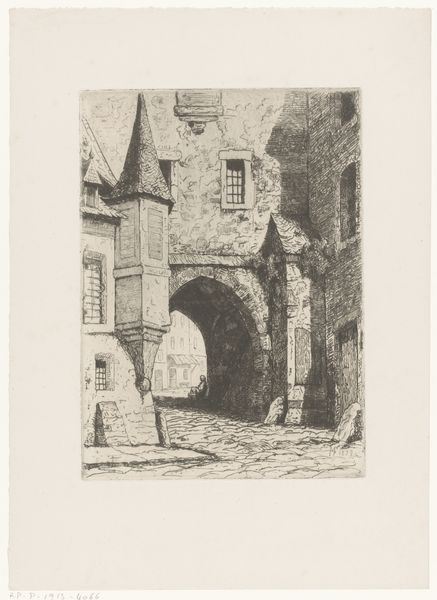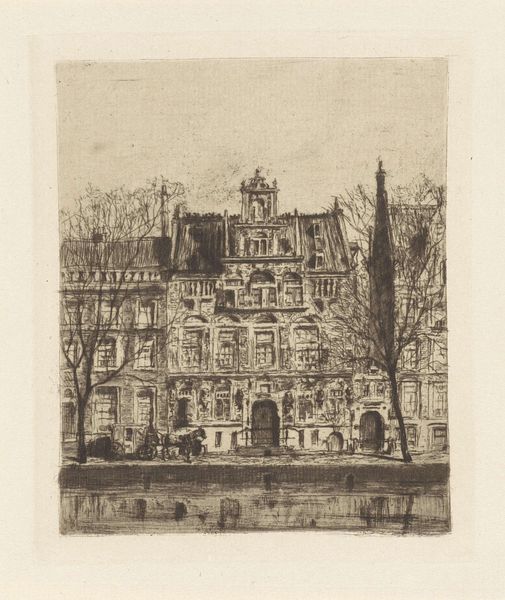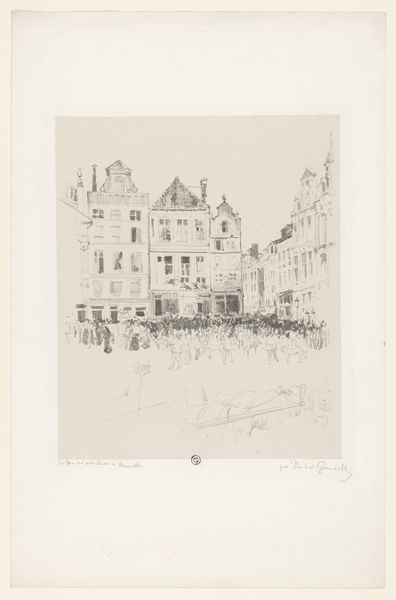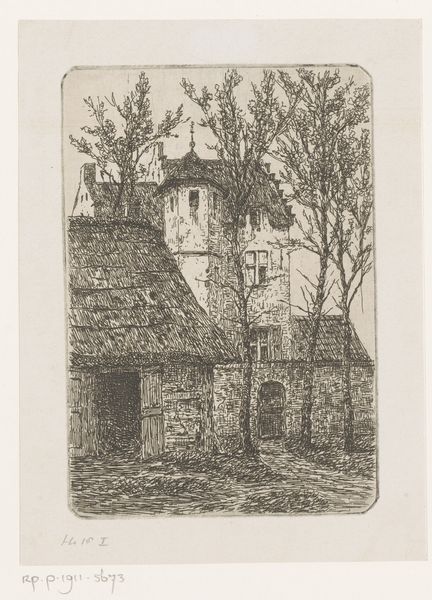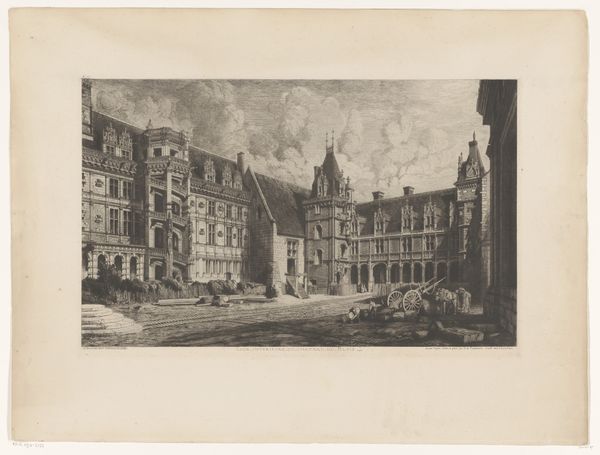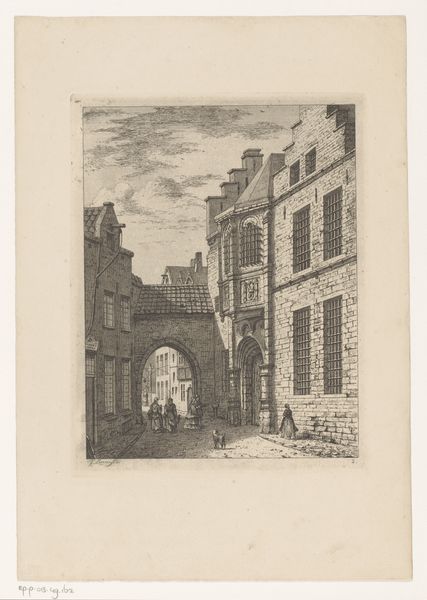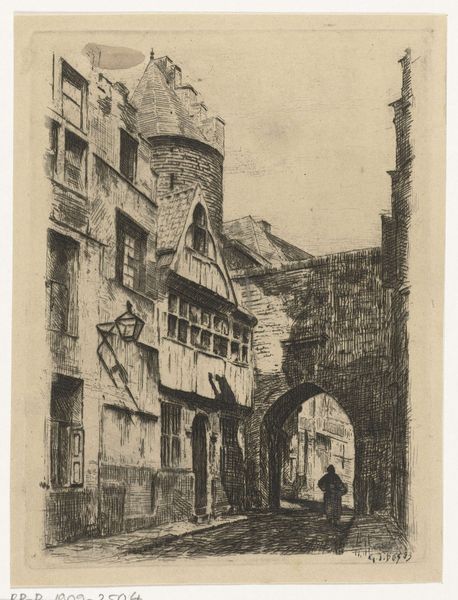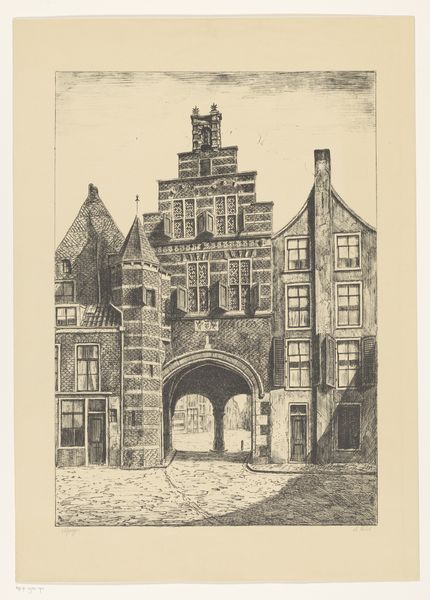
print, etching, architecture
# print
#
etching
#
cityscape
#
architecture
#
realism
Dimensions: 7 7/8 x 5 7/8 in. (20 x 14.92 cm) (plate)10 1/8 x 8 1/4 in. (25.72 x 20.96 cm) (sheet)
Copyright: Public Domain
Curator: Here we have George Taylor Plowman's "Maison Victor Hugo," a cityscape etching believed to be from the 19th century. What's your first take? Editor: It strikes me as very contained, almost like a memory fading around the edges. The dense lines creating the building give way to softer, sparser marks that hint at the sky and surroundings. Curator: Right, it's interesting to consider this house within the framework of 19th-century Paris, particularly thinking about Victor Hugo's exile and the social commentary he was producing. The building, especially in its formal architectural rendering, becomes a loaded symbol of bourgeois life against Hugo's own political stance. Editor: And the building itself is fascinating as an icon. Its repetitive window patterns and arches suggest stability, order, a visual language of permanence, doesn’t it? A reassuring presence. I wonder what kind of personal history it holds, known and unknown? Curator: Certainly. These visual markers of societal norms – architecture, attire – become potent under Plowman's hand. Look at the figures; their gender and suggested class are placed in stark relation to the built environment. Does the composition affirm their belonging, or does the medium offer space for critiquing access? Editor: The two women walking across the Place des Vosges inject an element of quiet drama as though characters stepped from a book into real space, with an atmosphere similar to theater set, making them players enacting daily routines. This building façade operates as much like mask, doesn't it? Curator: Yes! And by reproducing that stage on an etching, with the deep contrasts of ink and bare paper, we, as viewers, also are brought into that dialogue of social place and access. It is as if we are positioned alongside them in a past era, yet asked to question the narratives represented today. Editor: Absolutely. Symbols and echoes layered like translucent paper upon one another; a story continuing still now. It invites you to look past surfaces and consider how places and buildings have cultural memory beyond stone or cement Curator: Considering this etching from the dual viewpoints of symbolic memory and historical narrative transforms what initially might seem like just another city scene into a multilayered reflection. Editor: Agreed. The details beckon—but they suggest deeper mysteries of social interaction and hidden significance awaiting us.
Comments
No comments
Be the first to comment and join the conversation on the ultimate creative platform.
